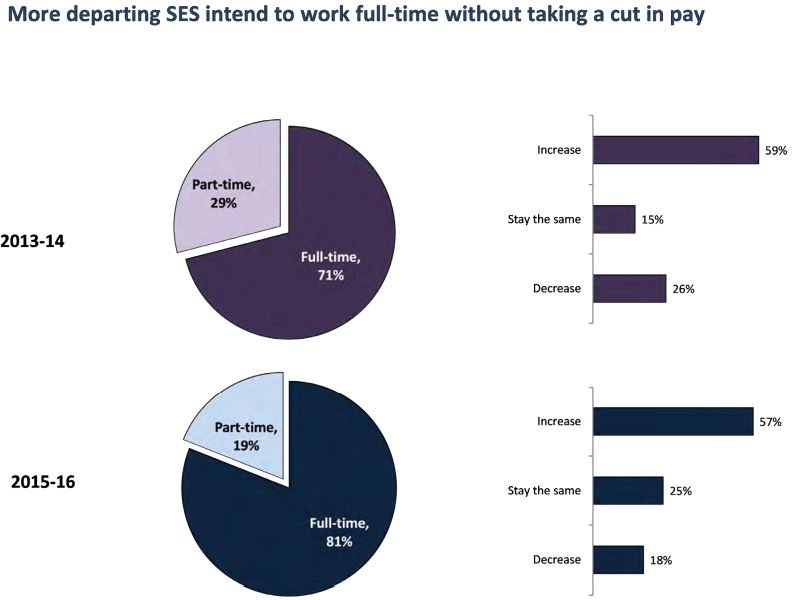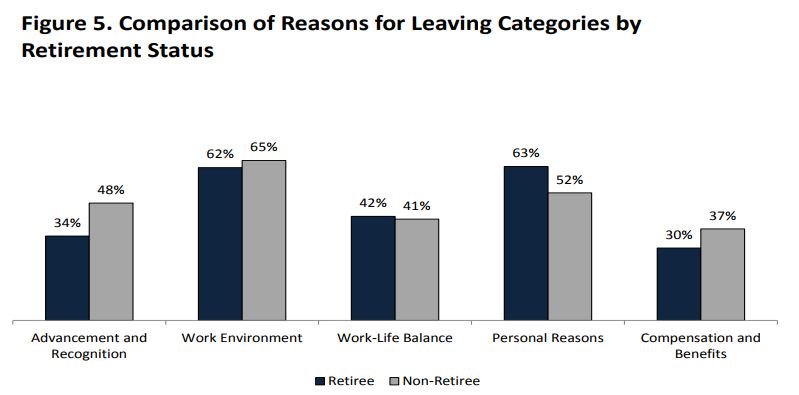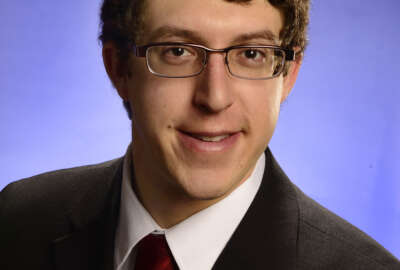
More senior executives say they’d recommend the SES to others
More senior executives chose to retire from the Senior Executive Service between 2015-2016 compared to previous years, according to the Office of Personnel Mana...
More top career leaders held a more positive view of the Senior Executive Service last year, according to the latest SES exit survey results from the Office of Personnel Management.
Roughly 63 percent of executives said in 2015 to 2016 that they would recommend the SES to others, while 13 percent said they wouldn’t recommend the Service and 24 percent said they were neutral.
The opinions are nearly identical to 2013-2014 results, the first year OPM administered an official, governmentwide SES exit survey. But most results fared better than the previous year, when 54 percent of executives said they’d recommend the SES to others, and 21 percent said they would not.
More SESers in 2015-2016 also said they’d recommend their agencies as a good place to work, compared to previous surveys. About 63 percent said in 2015-2016 that they’d recommend their organization, compared to 57 percent during the prior survey.
The results come from 212 senior executives who were in the process of leaving their agencies between August 2015 and July 2016.
The most recent survey paints a slightly better picture than the previous year’s results, which described a senior executive corps in need of a moral boost.
According to the new survey, most senior executives said retirement was their reason for leaving the SES. More executives, 61 percent between 2015-2016, said retirement was the reason for their departure, compared with 56 percent between 2014-2015 and 59 percent in 2013-2014.
Fewer executives in 2015 said they were resigning compared to previous years, while more SES said they planned to transfer to another agency. Roughly 10 percent resigned in 2015-2016, while 16 percent resigned in 2014-2015 and 12 percent in 2013-2014.

Between 2015-2016, more executives said they planned to leave the workforce permanently than in previous years. But all told, SESers were almost evenly split in their plans for the future.
About 31 percent said they planned to leave the workforce, 30 percent said they planned to work for pay after leaving their agencies and 15 percent said they expected to look for employment in the near future. Roughly 24 percent of executives said they were undecided about their plans.
Among the executives who indicated their intention to continue working, a majority, 35 percent, said they planned to work for a private company and not a government contractor.
In addition, more senior executives said they planned to leave their agencies and continue working full time without taking a pay cut.

Senior executives at different points in their career left for different reasons, and agencies have an opportunity to better understand them, OPM said.
“Agencies have less opportunity to persuade retiring members of the SES to stay,” OPM wrote. “Literature on organizational withdrawal often considers separations due to retirement distinct from other types of voluntary turnover — retirees want to reduce their commitment to employment in general and place more emphasis on other life roles. However, the other executives (non-retirees) are leaving with the intent to continue working, and it would benefit agencies to explore ways to retain those employees.”
Both retiring and non-retiring SES members said challenges with their work environment, such as the agency’s culture, senior leadership, political climate and lack of autonomy, was one of their top reasons for choosing to leave the federal workforce.
But their reasons for departure differed in other ways. “Personal reasons” was a more popular option for retirees than non-retirees.

For example, 41 percent of retiring executives said they left their SES positions because wanted to enjoy life without work commitments. About 1 percent of non-retiring executives gave the same reason.
About 36 percent of non-retiring executives, meanwhile, said a lack of opportunities for development contributed toward their decision to leave the SES. About 10 percent of retirees agreed.
Both retiring and non-retiring executives named an increase in compensation benefits most frequently as one factor that would encourage them to stay at their agencies.
But non-retiring executives also cited a change in duties or responsibilities, more autonomy and better work-life balance incentives as top factors that would encourage them to stay in the federal workforce.
Retiring SES members, however, said more retention incentives or a simple verbal encouragement from a supervisor may have persuaded them to stay longer.
But executives said their agencies made little effort to encourage them to stay, even though a fraction of departing SESers indicated they may have remained in government if given a better or different opportunity.
As roughly 71 percent of executives said their agencies made no effort to convince them to stay, OPM recommended department leadership conduct “stay interviews” to gauge an SES member’s interest in remaining in the workforce and what incentives may encourage the executive to stay on board.
Agencies have consistently struggled to develop succession plans for their long-tenured employees and senior executives who leave the organization, and 2015-2016 was no different.
About 61 percent of executives said their agencies had done no formal succession planning before they left the organization, and 56 percent said their agencies didn’t involve them in any preparations to plan for his or her successor.
Copyright © 2024 Federal News Network. All rights reserved. This website is not intended for users located within the European Economic Area.
Nicole Ogrysko is a reporter for Federal News Network focusing on the federal workforce and federal pay and benefits.
Follow @nogryskoWFED
Related Stories






